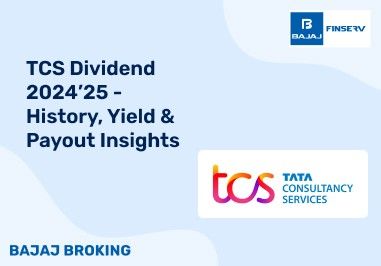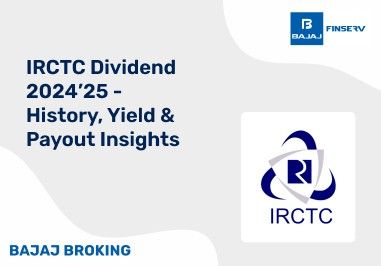If you participate in the stock market, you might have come across these two terms – “Direct Listing” and “Initial Public Offering (IPO).” In an IPO, to raise money from investors, a company issues new shares, gets them underwritten, and then gets them listed on a stock exchange.
However, in the case of a direct listing, a company does not issue new shares; instead, it gets its existing shares listed on a stock exchange, providing an opportunity to its existing shareholders to sell their shares to the public. The existing shareholders typically are a company’s promoters, investors, and employees, who already have its shares.
As opposed to IPO, direct listings do not involve an underwriter. Besides, as new shares are not issued in a direct listing, the share of existing shareholders does not get diluted. Apart from that, there are many other differences between a direct listing and an IPO. Read this blog, as it takes a deep dive into the topic of Direct Listing vs IPO.
Key Differences Between IPO and Direct Listing
By now, you know that an IPO allows a company to raise fresh capital from investors through the issuance of new shares. However, a direct listing does not require a company to issue new shares and does not help it raise fresh capital.
Instead, it allows its existing shareholders to sell their shares. By elucidating on Direct Listing vs IPO, the following table explains all the differences between these routes:
Parameter
| IPO
| Direct Listing
|
Objective
| The objective of an IPO is to help a firm raise capital by issuing new shares.
| The objective of a direct listing is to help a firm’s existing shareholders sell their shares.
|
Issuance of new shares
| An IPO requires a company to issue new shares to the public.
| A direct listing does not require a firm to issue new shares to the public. Instead, it allows existing shares to be sold.
|
Are underwriters involved?
| IPOs require the involvement of underwriters, who are typically investment banks.
| Underwriters are not involved in the case of a direct listing.
|
Cost
| An IPO typically is more costly than a direct listing. This is because it requires a company to pay underwriting fees and other charges.
| As no underwriting fees are involved in a direct listing, it is usually cheaper than an IPO.
|
Is capital raised in the process?
| Yes, an IPO allows a company to raise capital from the public.
| As fresh shares are not issued, no capital is raised through a direct listing.
|
Having understood the nuances of Direct Listing vs IPO, let us move to other aspects related to this blog.
Advantages and Disadvantages of IPOs
As a market participant, you should know the benefits and limitations of IPOs, which are explained below:
Advantages of IPOs
Help firms raise capital: IPOs allow firms to raise capital, which they can use for their growth and expansion.
Improved visibility: When a company’s shares get listed on a stock exchange, it improves its visibility and brand awareness, as a significant number of investors start recognizing it.
Liquidity: IPOs allow early investors of a firm to sell their shares in the open market, thereby providing them with liquidity.
Help reduce the debt burden: A firm can use the proceeds of an IPO to reduce its debt and thereby its interest obligation, which can go a long way to improve its financial position.
Disadvantages of IPOs
High costs: Typically, IPOs are more expensive than direct listings, as they require a company to pay underwriting fees, legal charges, etc.
Dilution of stake: As a company has to issue fresh shares in an IPO, it dilutes the stake of its existing shareholders. At times, a company’s founders lose control over its functioning after an IPO.
Fluctuations in the stock price: After a company’s shares get listed, they are subject to the vagaries of the stock market, which means its share price can go up or down significantly due to market movements. At times, such fluctuations can be so severe that a company may not understand its true valuation (or its true worth).
Advantages and Disadvantages of Direct Listings
Before purchasing a company’s shares offered through a direct listing, you should know the benefits and limitations of this route.
Advantages of Direct Listings
No dilution of stake: In a direct listing, a company does not issue new shares. Hence, it does not result in diluting the stake of its existing shareholders.
Lower expenses: Direct listings do not require the service of investment banks as underwriters. Hence, they are less expensive than an IPO for a company.
Faster access to the stock market: A company does not issue new shares in the case of a direct listing. Hence, it allows a company to access the market in a much faster manner than IPOs, which usually take more time.
Allows existing shareholders to sell their shares: Direct listings allow a firm’s current shareholders to sell their shares, providing them with much-needed liquidity.
Disadvantages of Direct Listings
Higher initial price volatility: There are no underwriters involved in direct listings. Hence, there is more likelihood of a higher initial volatility in the share price. Besides, the supply of shares depends upon a company's existing shareholders. If they do not want to sell their shares, the transactions cannot happen.
Likelihood of low liquidity: If investors do not show sufficient interest initially, there is a possibility of low liquidity in direct listings.
Factors to Consider When Choosing Between IPO and Direct Listing
The following factors are important for investors to consider while choosing between an IPO and a direct listing:
Objective: Before investing in an IPO or a direct listing, an investor must know why a company is choosing either of these routes. For example, he should know what a company intends to do with the money raised through an IPO. Based on that, he should make his decision.
Price stability: Direct listings depend upon market demand, which can lead to significant price fluctuations in initial days. However, IPOs usually have their price set by underwriters, which may or may not reflect the true value of an issuing company.
Liquidity: IPOs tend to have a lock-in period, which restricts the selling of shares for a few months. Compared to IPOs, a direct listing can offer more liquidity because existing shareholders can sell their shares immediately in this case.
Transparency: When a company announces an IPO, regulators require it to make detailed disclosures, which provide investors with insights. Hence, an IPO can result in a greater level of transparency about a company than a direct listing.
How to Invest in IPOs and Direct Listings?
If you want to invest in an IPO, you need to open a demat account with a brokerage house. When a company announces its IPO, you will be required to fill out an online application form, wherein you will provide the information about how many shares you want to purchase and you will be making the required payment.
After an IPO closes, you will get shares allotted according to the demand for a company’s shares and your bid. Meanwhile, the process of investing in a direct listing is simpler. Direct listings do not require you to fill any applications.
When a firm’s shares get listed through a direct listing, you can buy them through your online demat account the way you purchase any other share.
Conclusion
Initial public offerings (IPOs) and direct listings provide investors with an opportunity to purchase the shares of a company. Hence, before investing through these routes, investors should thoroughly research a company.
Besides, an investor should know why a company is choosing the IPO or the direct listing route. For that purpose, he should read the relevant news and also speak to fellow investors. As no underwriters are involved in a direct listing, such offerings can experience high price volatility. Hence, investors need to be careful.
So, a prudent investor should take all necessary precautions and do thorough research before investing in a direct listing or an IPO.













